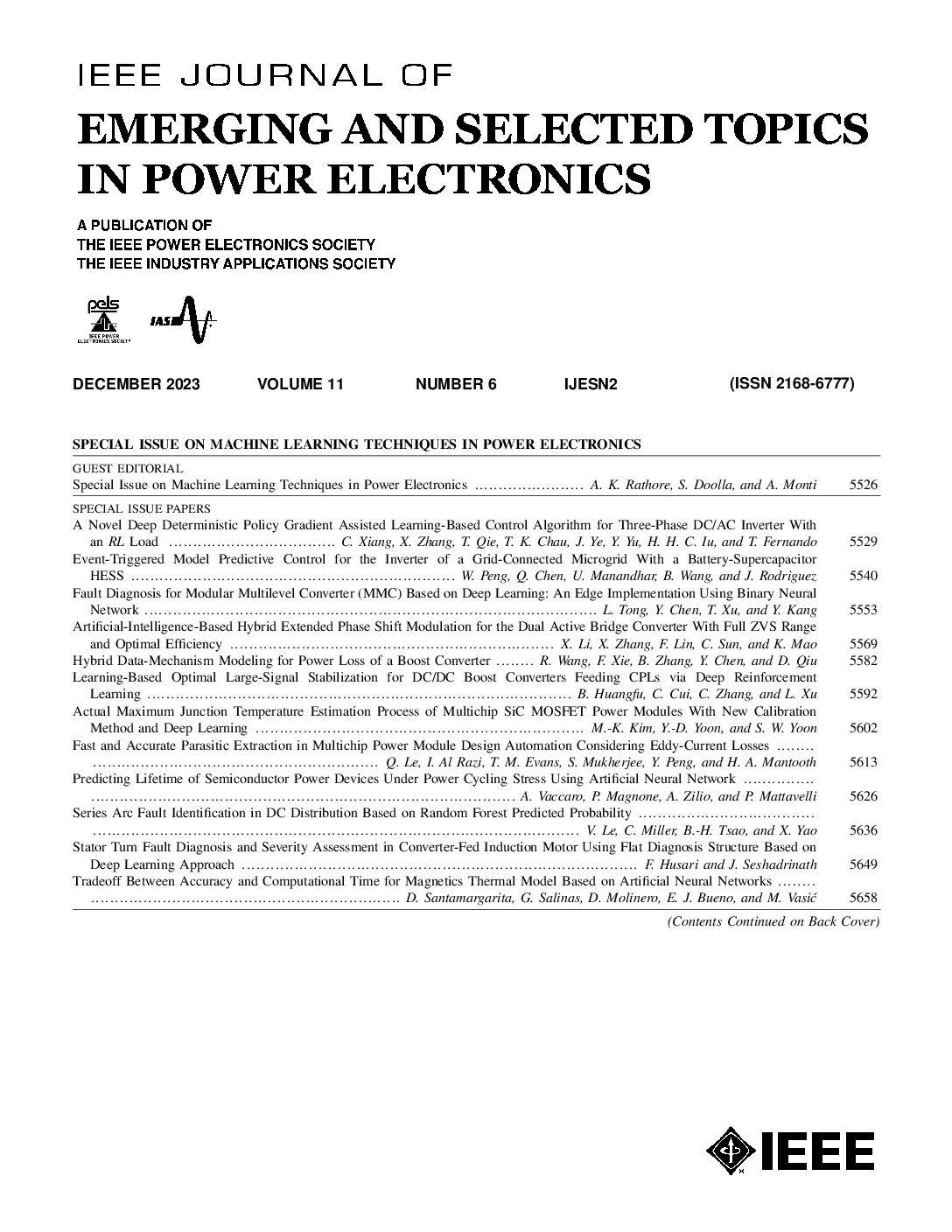An Accurate Dynamic Time-Domain Model for LLC Resonant Converter by Considering Nonideal Components, Various Modulation Strategies, and Dynamic Process
IF 4.6
2区 工程技术
Q1 ENGINEERING, ELECTRICAL & ELECTRONIC
IEEE Journal of Emerging and Selected Topics in Power Electronics
Pub Date : 2025-04-07
DOI:10.1109/JESTPE.2025.3558288
引用次数: 0
Abstract
In order to improve the performance of inductor-inductor–capacitor (LLC) resonant converters in wide voltage range applications, many novel modulation strategies other than traditional pulse-frequency modulation (PFM) have been proposed, such as pulsewidth modulation (PWM) and phase shift modulation (PSM). However, the existing modeling method cannot be extended to other modulation methods easily. In most cases, the existing models are developed based on the assumption of ideal components, which neglect parasitic components and dead time effect. Practically, these nonideal factors have a significant influence on the steady-state operation and the soft-switching performance. Besides, due to the complexity and nonlinearity of the operation process, it is difficult to conduct the small-signal analysis. In this article, an accurate dynamic time-domain model is developed based on stage iteration, considering common parasitic components, the dead time effect, and various modulation methods. It can reflect the implementation of zero voltage switching (ZVS) and the high-frequency oscillation under the light load. Based on the improved dynamic model, a convenient and accurate small-signal analysis method is proposed. Simulation and experimental results are presented to verify the accuracy of the model. Compared to the traditional model, the relative error of the voltage gain can be reduced from 14.2% to 5.0%.考虑非理想元件、多种调制策略和动态过程的LLC谐振变换器精确动态时域模型
为了提高电感-电感-电容(LLC)谐振变换器在宽电压范围应用中的性能,除了传统的脉冲频率调制(PFM)外,还提出了许多新的调制策略,如脉冲宽度调制(PWM)和相移调制(PSM)。但是,现有的建模方法不容易推广到其他调制方法。现有模型大多建立在理想分量假设的基础上,忽略了寄生分量和死区效应。在实际应用中,这些非理想因素对系统的稳态工作和软开关性能有很大的影响。此外,由于操作过程的复杂性和非线性,对其进行小信号分析是困难的。本文考虑了常见的寄生分量、死区时间效应和各种调制方法,建立了基于阶段迭代的精确动态时域模型。它可以反映零电压开关(ZVS)的实现和轻负载下的高频振荡。基于改进的动态模型,提出了一种方便、准确的小信号分析方法。仿真和实验结果验证了该模型的准确性。与传统模型相比,电压增益的相对误差可从14.2%降低到5.0%。
本文章由计算机程序翻译,如有差异,请以英文原文为准。
求助全文
约1分钟内获得全文
求助全文
来源期刊

IEEE Journal of Emerging and Selected Topics in Power Electronics
ENGINEERING, ELECTRICAL & ELECTRONIC-
CiteScore
12.50
自引率
9.10%
发文量
547
审稿时长
3 months
期刊介绍:
The aim of the journal is to enable the power electronics community to address the emerging and selected topics in power electronics in an agile fashion. It is a forum where multidisciplinary and discriminating technologies and applications are discussed by and for both practitioners and researchers on timely topics in power electronics from components to systems.
 求助内容:
求助内容: 应助结果提醒方式:
应助结果提醒方式:


